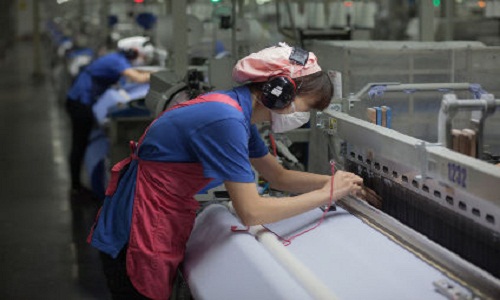"The yarn market across the globe has witnessed some significant changes in recent times mainly due to China’s declining cotton yarn import. The narrowing price parity between domestic yarn and imported yarn has contributed majorly for the reduced cotton yarn import in China."

The yarn market across the globe has witnessed some significant changes in recent times mainly due to China’s declining cotton yarn import. The narrowing price parity between domestic yarn and imported yarn has contributed majorly for the reduced cotton yarn import in China.
World feels the heat for China’s declining import
Clearly, there has been a mixed impact on the global supply scenario due to China’s declining numbers. The impact on the global supply scenario in short term, reveals demand for imported yarn to slow down owing to worldwide sluggish market conditions and increasing cotton prices. However in the long term, chances are there that China may become a self sufficient country as far as yarn supply is concerned, whereas there still will be scope for certain varieties of fabrics as China is moving towards value added products.

“Indian yarn manufacturers to sustain have already started working on adopting two pronged strategy, increase investments in downstream industry so as to increase yarn consumption in the domestic market in addition to diversification of market mix so as to decrease dependence on Chinese market” says N. Ravindranathan, Director, TEXPROCIL
India’s and Pakistan’s loss is Vietnam’s gain
In recent times Vietnam has emerged as a strong market increasing its market share in the global scene and Chinese weavers and knitter are increasingly souring from Vietnam due to narrowing price parity. While India and Pakistan are losing market share in China, Vietnam is gaining market share boosted by the fast developing spinning sector to Xinjiang. In spite of India being the most competitive country for cotton yarn in the world, there is imports duty on Indian yarn while Vietnam and Indonesia are duty free.” This of course forces the garment industry to pay more for yarn, and makes other countries like Bangladesh, India more competitive where they get access to the best and cheapest possible yarn from across the world.” says Sanjay Jain, Managing Director, TT Ltd and President NITMA.
“Even though there is a steep increase in import of yarn from Vietnam in recent months, but it is to be seen if the quality concern has been resolved. There have been reports by importers that as far as quality is concerned, Indian yarn is much better than supply from Vietnam. Moreover if TPP kicks in, Vietnam will need all the home spun yarn for their domestic captive consumption. Apart from this, Xinjiang autonomous region is planning to add 18 million new spindles by the end of 2020, which is likely to result in drastic decline in yarn import into China. In view of these factors, Indian manufacturers and suppliers are working on suitable strategy to consolidate spinning sector and increase yarn consumption in downstream textile value chain in India” avers Jain.
Rising concern to force India to rework on its strategy
The recent volatility is going to be a major concern, believe most industry experts. For Cotton based markets like India, however the worry remains that cotton fibre would gradually lose more ground to man- made fibres which are relatively stable. “In short term, Indian spinners have been forced to cut production to match the demand and supply situation. The disparity of cotton and yarn this time has been the highest ever – spinners are facing huge losses. In July exports of yarn from India to China fell by 75% - such severe disruption will of course create a lot of pain to the Indian industry. However this shrunken supply, will create sudden pressure on availability when peak season starts from November. ”explains Jain.
Further experts believe that for India to retain its position, tariff barriers need to be broken down in order to set up an efficient global supply chain. By discriminating on import tariff of yarn and fabric from India against other nations like Vietnam, Korea, Indonesia and Pakistan it is the end consumer who is losing out and being put at a disadvantage.












